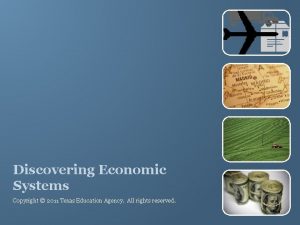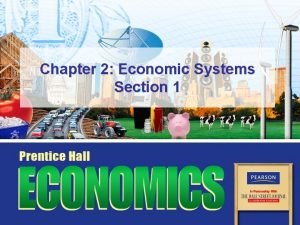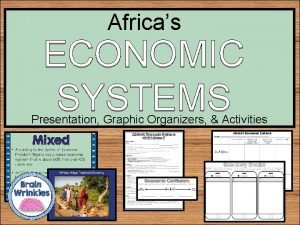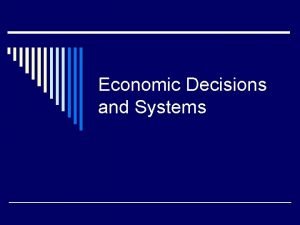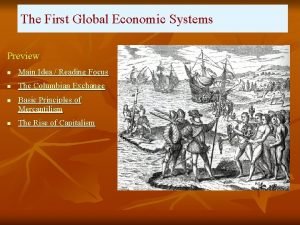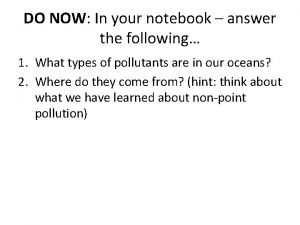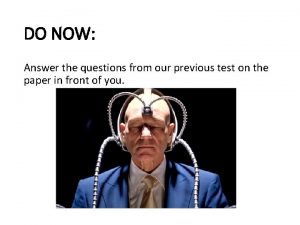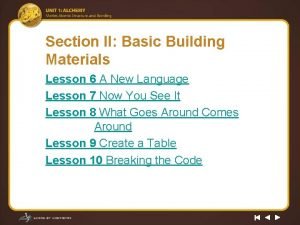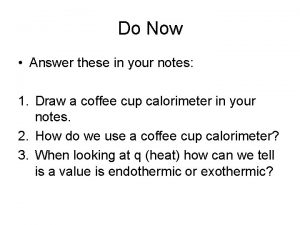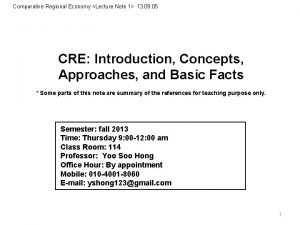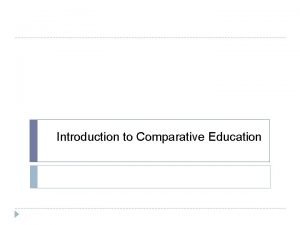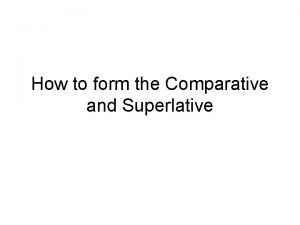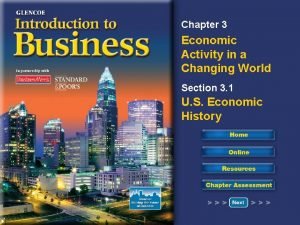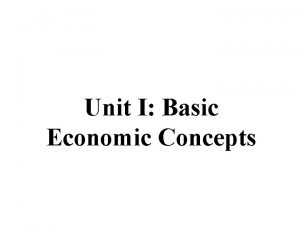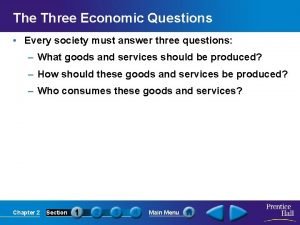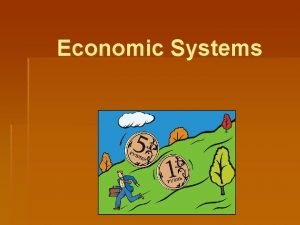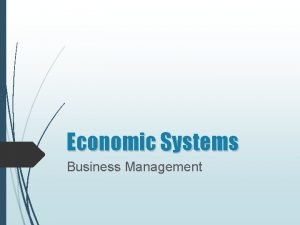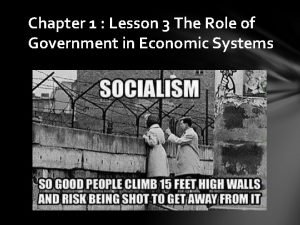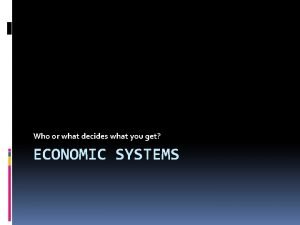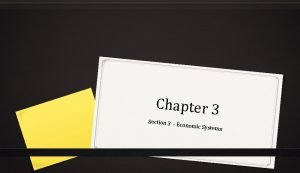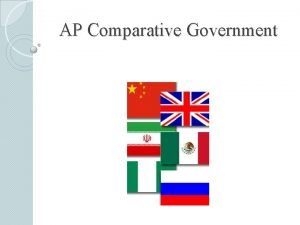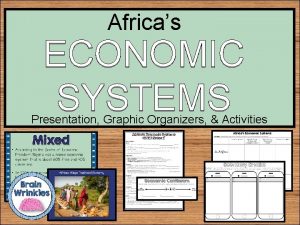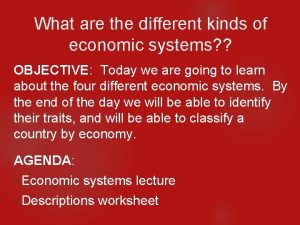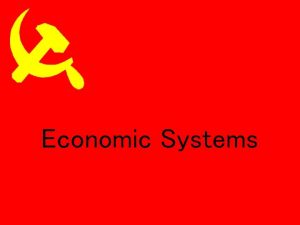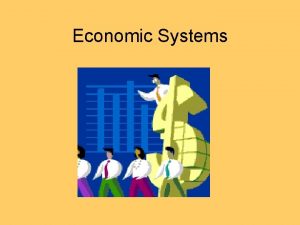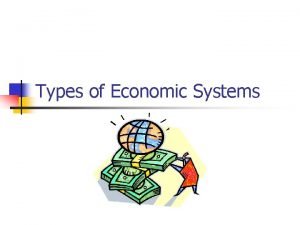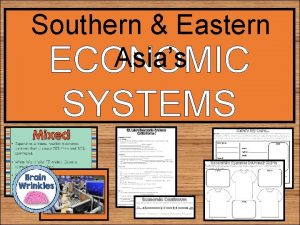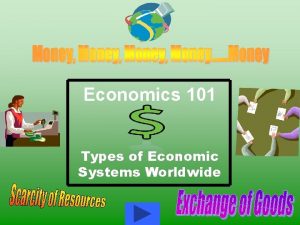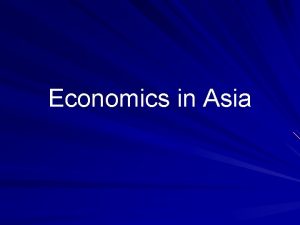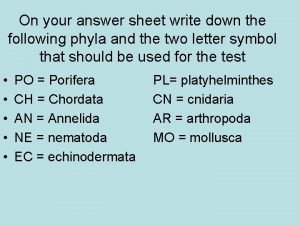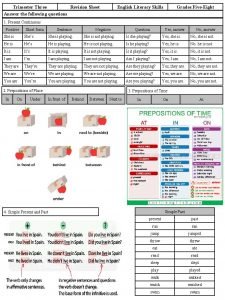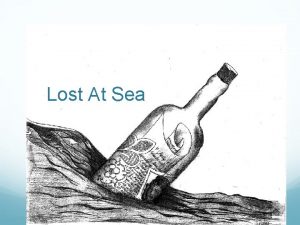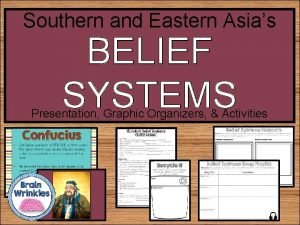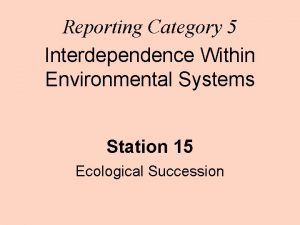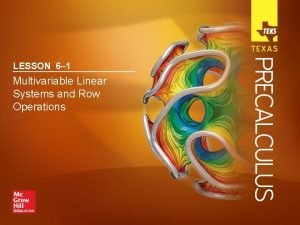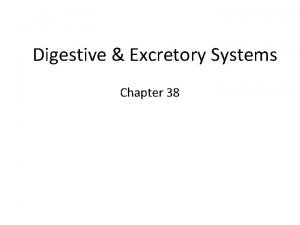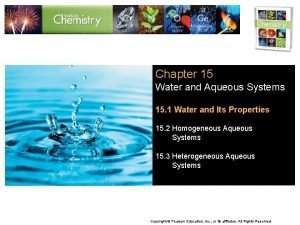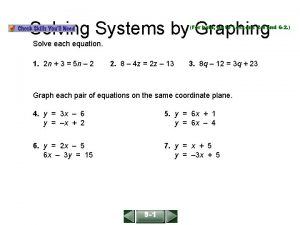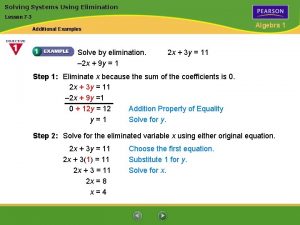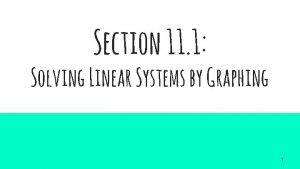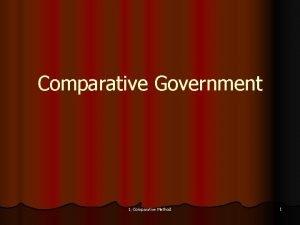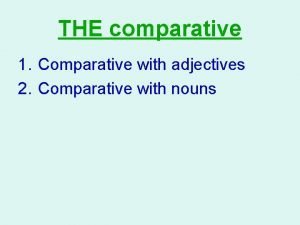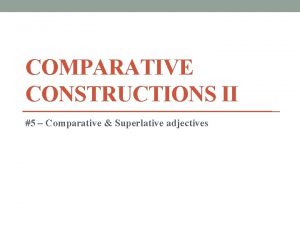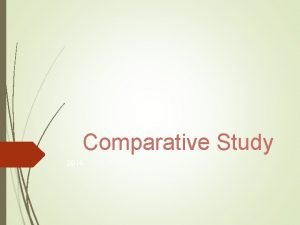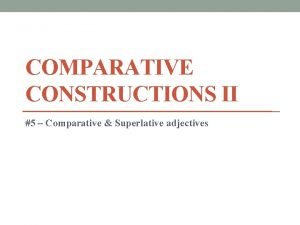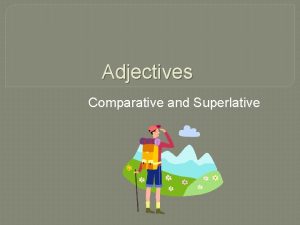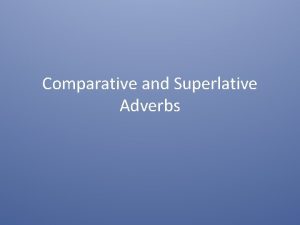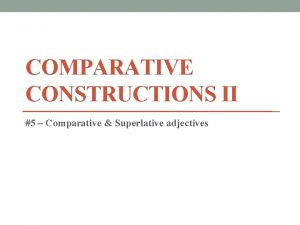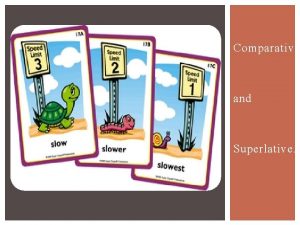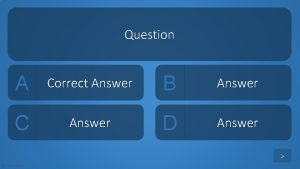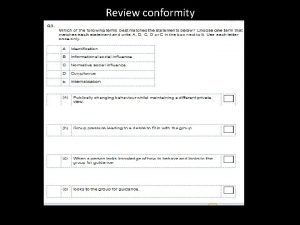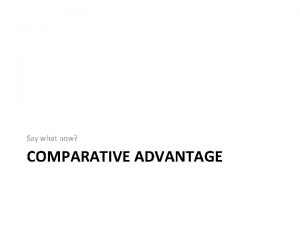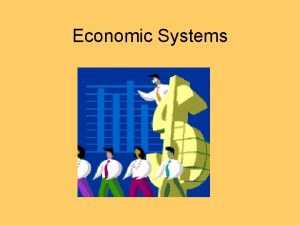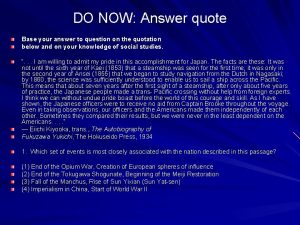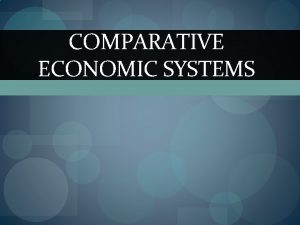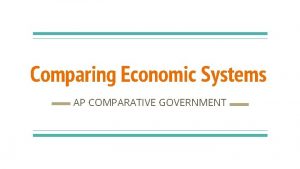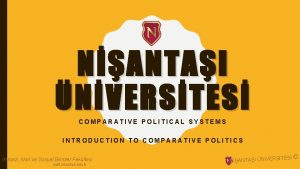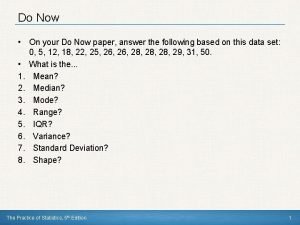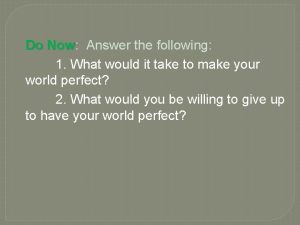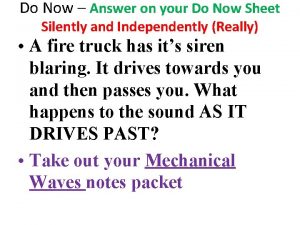Economic Systems Comparative Economic Systems Do Now Answer



































































- Slides: 67

Economic Systems

Comparative Economic Systems Do Now: Answer the following question to the best of your ability: What problem/issue determines how a country needs a system to determine how to use its productive resources?

Human wants are unlimited, but resources are not.

Economic System An economic system, is the way a nation makes economic choices about how the nation will use its resources to produce and distribute goods and services.

An economic system describes how a country’s economy is organized Because of the problem of scarcity, every country needs a system to determine how to use its productive resources Scarcity = not having enough of something Given scarce resources, an Economic System must answer the three basic economic questions

Economic Systems 1. WHAT TO PRODUCE? (What kinds of goods and services should be produced? ) 2. HOW TO PRODUCE? (What productive resources are used to produce goods and services? ) 3. FOR WHOM TO PRODUCE? (Who gets to have the goods and services?

Standards Used to Distinguish Economic Systems Some standards used to distinguish among economic systems are: • Who owns the resources? • What decision-making process is used to allocate resources and products? • What types of incentives guide economic decision makers?

Three Economic Systems • Traditional Economy • Command Economy • Market Economy 8

Types of Economic Systems • • Traditional System Command (controlled) System Market (capitalist) Mixed System

Traditional Economy • An economic system in which economic decisions are based on customs and beliefs • People will make what they always made & will do the same work their parents did • Exchange of goods is done through Bartering: trading without using money

Traditional Economy • Who decides what to produce? – People follow their customs and make what their ancestors made • Who decides how to produce goods & services? – People grow & make things the same way that their ancestors did • Who are the goods & services produced for? – People in the village who need them

Traditional Economy • Examples: – Villages in Africa and South America – the Inuit tribes in Canada – the caste system in parts of rural India – the Aborigines in Australia

Traditional Economic System. Me give you bone for Audi 500 - me drive fast past you in mud! I give you bone for that plastic club!

Traditional System • Traditional economy – system in which economic decisions are based on customs and beliefs that have been handed down from generation to generation – – – Trades and work learned from parents Know what is expected of you Change discouraged or punished Production inefficient and choice of goods is rare Examples – Eskimos, Aborigines & Amish?

Traditional Economic System: Ritual, Habit, and Custom • The basic economic questions are answered: by doing things the way they have always been done.

Advantages • Sets forth certain economic roles for all members of the community • Stable, predictable, and continuous life • Revolves around family • Communities stay relatively close and small

Disadvantages • Discourages new ideas, new technology, and new ways of doing things • Stagnation and lack of progress • Lower standard of living – lack modern conveniences • Have few mechanisms in place to deal with disasters such as floods, drought

Traditional System • Traditional economy – system in which economic decisions are based on customs and beliefs that have been handed down from generation to generation – – – Trades and work learned from parents Know what is expected of you Change discouraged or punished Production inefficient and choice of goods is rare Examples – Eskimos, Aborigines & Amish?

Traditional Economy In a traditional economy, goods and services are produced by the family for their personal consumption. A traditional economy is shaped largely by custom or religion.

Traditional Economy In a traditional economy, resources are allocated according to long-lived practices from the past. There is little surplus (something extra) and little trade (or exchange of goods).

Traditional Economy In a traditional economy, there is only a limited need for markets (places to buy and sell goods and services).

Traditional Economy A traditional economy is the type of economy found in less developed nations, usually in rural areas.

Command Economy In a command economy, all resources are collectively owned and directed by the government. In a command economy, the government decides what and how much to produce.

In a command economy, the government answers the three basic economic questions: 1. What? A dictator or a central planning committee decides what products are needed. 2. How? Since the government owns all means of production in a command economy, it decides how goods and services will be produced. 3. For whom? The government decides who will get what is produced in a command economy.

Command Economy In a command economy, the government decides where to locate economic activities.

Command Economy In a command economy, the government decides what prices to charge for goods, including agricultural goods and services.

Command Economy In a command economy, economic decisions are often made to further the goals of the government.

Command Economy In a command economy, production costs (how much it costs to make an item), are not reflected in the cost of the item. For example, in a command economy it might cost $2. 00 to produce a loaf of bread, but the price might be set at $1. 00 in order to ensure that customers are able to afford adequate food.

Command Economy In a command economy, the price might be set higher than the production costs. For example, in a command economy it might cost $5, 000. 00 to produce a car, but the price might be set at $10, 000. 00 in order to ensure that only the wealthy can buy it.

Command System § Government makes all economic decisions & owns most of the property § Governmental planning groups determine such things as the prices of goods/services & the wages of workers § This system has not been very successful & more and more countries are abandoning it

Command Economy • Who decides what to produce? – Government makes all economic decisions • Who decides how to produce goods and services? – Government decides how to make goods/services • Who are the goods and services produced for? – Whoever the government decides to give them to

Command System § Countries with communist governments have Command economies § Examples: There are no truly pure command economic systems, but close countries are: North Korea, former Soviet Union, Cuba *Germany and Russia have moved away from having a Command economy since 1991. Now they have a Mixed economy.

Command System • Command economy – system in which the government controls the factors of production and makes all decisions about their use – Government decides what to produce & how it will be distributed – Government guides people into certain jobs – Lack of incentive to work hard, few choices, limited efficiency or inventiveness – North Korea & China (changing)

13 -14. Command Economy Critics of market economies claimed that capitalism was a form of “class warfare. ” They claimed that capitalism/ market economies resulted in a few people ruling over the masses. In order to end capitalism/ market economies critics claimed that a revolution was needed to redistribute goods equally. This revolution came to be known as communism and its economy was known as a command economy. In a command economy the government controls all aspects of the economy.

Command Economy- Typically begin with revolutions.

Karl Marx was the founder of the communist/ command economy ideology. He claimed that as long as there existed a business owning class oppression would continue.

Traits of a Command Economy • The government controls all aspects of the economy • Private property is illegal • Supply and demand are determined by the government, not by consumers and producers. • Everyone is paid equally no matter what job they do. • Industry and businesses are owned and controlled by the government, not private individuals.

15. Criticism of Command Economies • Command economies are inefficient and reward unproductive workers. Critics claim that since workers are awarded the same amount of money for doing every job workers aren’t productive. • Command economies result in shadow/ illegal markets. Because the government controls the distribution of goods, rather than consumers and producers individuals begin to sell things illegally. • Command economies cease to stay competitive in the world because competition and entrepreneurship is discouraged.

Examples of a Command Economy- In North Korea the former dictator Kim Il Sung controlled the economy with an iron hand had statues of himself built to show his people who was in charge of the government and the economy.

Command or Centrally Planned Economic System Basic economic questions of what, how and for whom to produce are answered: by a central planning authority.

Advantages • Central authority is in command of the economy • Capable of dramatic change in a short time • Little uncertainty over choice of career, where to work, or losing job • Many basic education, public health, and other public services available at little or no cost

Disadvantages • Does not meet wants and needs of consumers • Lacks effective incentives to get people to work • Requires large bureaucracy, which consumes resources • New and different ideas discouraged, no room for individuality

Problems of a Centrally Planned Economy Centrally planned economies face problems of poor-quality goods, shortages, and diminishing production.

Market Economy (free enterprise, capitalism) Individual producers must figure out how to plan, organize, and coordinate the production of products and services. In a market economy, resources are allocated through individual decision making.

Market System • Market – freely chosen activity between buyers and sellers of goods and services • Circular flow of economic activity – economic model that pictures income as flowing continuously between businesses and consumers • Advantages – free to choose career and how to spend $, own private property, take risks, & many goods for purchase • Disadvantages – How to provide for elderly, young & sick

Market Economy (free enterprise, capitalism) • In a free-market country, people can own their own businesses and property. People can also buy services for private use, such as healthcare. (But most capitalist governments also provide their own education, health and welfare services. )

Market Economy (free enterprise, capitalism) • In a market economy, prices act as signals of scarcity. When the price of something is high, that means it's more scarce. Demand for it is high relative to the supply.

Market Economy (free enterprise, capitalism) • When the price of something is low, then it's less scarce. By observing prices, consumers and producers can choose their behavior to respond to scarcity.

Market Economy (free enterprise, capitalism) • High prices encourage producers to switch from more scarce to less scarce resources, and they encourage consumers to switch from products and services that require more scarce resources to products and services that require fewer scarce resources.

Characteristics of the American Economy • Freedom of choice – can choose to produce or not produce or to buy or not to buy • 6 Characteristics of a pure market system – – – 1. 2. 3. 4. 5. 6. Little or no government control Freedom of enterprise Freedom of choice Private property Profit incentive Competition

Characteristics of the American Economy • Limited role of government – Adam Smith – founder of modern economics - Wealth of Nations – people will use resources efficiently to achieve the maximum good for society – Capitalism – economic system in which private individuals own the factors of production & decide how to use them within legislated limits – Laissez-faire – pure capitalism – economic system in which the government minimizes its interference with the economy – Government has increased its role since the 1880 s

Characteristics of the American Economy • Freedom of enterprise – Free enterprise system – economic system in which individuals own the factors of production and decide how to use them within legal limits; same as capitalism – Regulations – zoning, child labor, pollution & taxes – examples – May make money or may lose money • Freedom of choice – Buyers, not sellers, make decisions about what is to be produced – Government influences the market to protect consumers – safety standards & price controls

Characteristics of the American Economy • Profit Incentive – Profit – money left after all the costs of production have been paid – wages, bills & taxes – Profit incentive – desire to make money that motivates people to produce and sell goods and services

Characteristics of the American Economy • Private Property – Private property – whatever is owned by individuals rather than by government – Constitution guarantees an owner’s right to private property and its use (eminent domain) • Competition – rivalry among producers and sellers of similar goods and services to win more business – Leads to lower prices, better quality and an efficient use of resources – Low barriers to entry are needed

The Goals of the Nation • Goals of free enterprise in the U. S. – Economic freedom – allows members of society to make choices and possibly fail – Economic efficiency – wise use of available resources so that costs do not exceed benefits – Economic equity – attempt to balance an economic policy so that everyone benefits fairly – (equal pay, hiring practices & disabled)

The Goals of the Nation • Economic security – protection against accidents, natural disasters, bank failures etc. • Economic stability – reduce extreme ups & downs in standard of living – Standard of living – the material well-being of an individual, group, or nation measured by how well their necessities and luxuries are satisfied • Economic growth – expansion of the economy to produce more goods, jobs and wealth • Trade-Offs among goals – limits on what you can do with resources due to scarcity (Social Security)

Mixed System • Mixed economy – system combining characteristics of more than one type of economy • Most countries have a mixed economy • Most individuals make decisions but are regulated to various extents by the government

Mixed System • Mixed economy – system combining characteristics of more than one type of economy • Most countries have a mixed economy • Most individuals make decisions but are regulated to various extents by the government

16. Mixed Economy Mixed economies exist somewhere between command market economies. In a mixed economy the government tends to own major industries like utilities, health care and major manufacturing industries; however, individuals own most small businesses. Mixed economies tend to tax their citizens more than market economies, but less than command economies.

Traits of a Mixed Economy • The government controls large industries, while private individuals control small businesses. • Citizens are taxed heavily to provide all citizens a social safety net such as welfare, free university tuition and free health care. • Property is controlled by both the government and private individuals. • Workers tend to be somewhat less productive than those in market economies, but less product then those in command economies. • Consumers generally have a wide variety choices.

President Franklin Roosevelt introduced the principles of a mixed economy to the US by expanding the government, providing welfare and establishing Social Security for the elderly.

18. Examples of a Mixed Economy • In France health care is free, university costs very little if you get in (many do not) and taxes are high. However, there also private industries based out of France like Air France and Puegot. • In United Kingdom health care is free, university is cheap, but citizens can purchase private health insurance and attend private universities if they choose. • In the United States the federal government owns much land in the West and private ranchers are allowed to graze their cattle on that land.

19. Criticism of Mixed Economies • Critics of mixed economies claim that they often result in unproductive workers because there is not as much incentive to work hard as there is in a market economy. As a result mixed economies often suffer from higher unemployment rates and lack the same number of entrepreneurs as market economies. • Mixed economies often must raise taxes in order to sustain all of the social services such as welfare, free health care, low cost university education and pension systems for the elderly which can lead to a stagnant economy. • In essence, critics claim that mixed economies enable irresponsible behavior.

16. Mixed Economy Mixed economies exist somewhere between command market economies. In a mixed economy the government tends to own major industries like utilities, health care and major manufacturing industries; however, individuals own most small businesses. Mixed economies tend to tax their citizens more than market economies, but less than command economies.

6 -7. Market Economy As long ago as ancient Egypt humans began to use forms of money to trade for goods and with the free trade of goods arose what is now known as the market economic system. In a market economy producers make goods based on the amount demand they perceive to exist among consumers. Consumers in turn pay for items based on their supply. For instance, gold is greatly demanded by people across the world, but its supply is limited. Therefore, gold is expensive.

Resources, also called factors of production, are all the things used in producing goods and services. The basic resources available to all societies are: • Natural(or Land) • Human (or Labor) • Capital

67
 Chapter 1 lesson 2 our economic choices worksheet answers
Chapter 1 lesson 2 our economic choices worksheet answers Discovering economic systems guided practice
Discovering economic systems guided practice Now i see it now you don't
Now i see it now you don't Education health and famine cloze notes
Education health and famine cloze notes Chapter 2 economic systems answer key
Chapter 2 economic systems answer key Africa's economic systems comprehension check
Africa's economic systems comprehension check Chapter 2 economic systems and decision making
Chapter 2 economic systems and decision making Chapter 2 economic systems and decision making
Chapter 2 economic systems and decision making Chapter 1 economic decisions and systems answer key
Chapter 1 economic decisions and systems answer key Comparative systems worksheet answer key
Comparative systems worksheet answer key The first global economic systems
The first global economic systems 1. answer the following questions
1. answer the following questions In your notebook answer the questions
In your notebook answer the questions Answer the following questions on your notebook
Answer the following questions on your notebook Now answer these questions
Now answer these questions Now answer the
Now answer the Slide to answer
Slide to answer Lesson 7 now you see it the copper cycle answer key
Lesson 7 now you see it the copper cycle answer key Now answer these questions
Now answer these questions Passive transport vs active transport venn diagram
Passive transport vs active transport venn diagram Economic growth vs economic development
Economic growth vs economic development What is economic growth and development
What is economic growth and development Economic comparative and superlative
Economic comparative and superlative Introduction of comparative education
Introduction of comparative education Superlativ tall
Superlativ tall Correlational study
Correlational study Chapter 3 economic activity in a changing world answer key
Chapter 3 economic activity in a changing world answer key Unit 1: basic economic concepts answer key
Unit 1: basic economic concepts answer key Economic question answer
Economic question answer The three economic questions that every society
The three economic questions that every society Economic systems examples
Economic systems examples Economic system example
Economic system example How many economic systems are there
How many economic systems are there Mixed economy political cartoon
Mixed economy political cartoon Chapter 2 economic systems and decision making
Chapter 2 economic systems and decision making Lesson 3 the role of government in economic systems
Lesson 3 the role of government in economic systems Who or what decides what you get?
Who or what decides what you get? Free enterprise system def
Free enterprise system def The three economic systems
The three economic systems Economic systems
Economic systems Africa's economic systems cloze notes 1
Africa's economic systems cloze notes 1 Traditional economy
Traditional economy Why do we have economic systems
Why do we have economic systems Disadvantages of
Disadvantages of Command economy
Command economy Se asian economies comprehension check answer key
Se asian economies comprehension check answer key Types of economic systems
Types of economic systems What do economic systems seek to do?
What do economic systems seek to do? Copy and answer the following on your answer sheet
Copy and answer the following on your answer sheet In your answer sheet answer the following questions
In your answer sheet answer the following questions In your notebook write questions and short answers
In your notebook write questions and short answers Ace apush
Ace apush Lost at sea activity
Lost at sea activity Se asia's belief systems cloze notes 1 answer key
Se asia's belief systems cloze notes 1 answer key Interdependence within environmental systems
Interdependence within environmental systems Chapter 11 lubrication systems answer key
Chapter 11 lubrication systems answer key Lvdt equations
Lvdt equations 6-1 multivariable linear systems and row operations
6-1 multivariable linear systems and row operations Section 35-5 drugs and the nervous system answer key
Section 35-5 drugs and the nervous system answer key Chapter 38 digestive and excretory systems answer key
Chapter 38 digestive and excretory systems answer key Water and aqueous systems chapter 15 answers
Water and aqueous systems chapter 15 answers On a wet barrel hydrant where is the valve located
On a wet barrel hydrant where is the valve located Lesson 9-1 slope
Lesson 9-1 slope Chapter 15 water and aqueous systems
Chapter 15 water and aqueous systems Lesson 7 how to solve basic algebraic equations
Lesson 7 how to solve basic algebraic equations Lesson 11-1 solving linear systems by graphing answer key
Lesson 11-1 solving linear systems by graphing answer key Big idea 7 earth systems and patterns answer key
Big idea 7 earth systems and patterns answer key Chapter 36 section 2 human development before birth
Chapter 36 section 2 human development before birth

